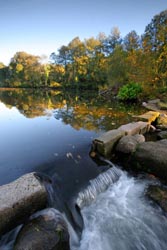ICT for River Basin Management
The European Union's Water Framework Directive (WFD) targets a new attitude toward water management. It embodies a more holistic approach known as River Basin Management (RBM), which involves a wide range of stakeholders not necessarily limited to one region or country. As in many other disciplines, Information and Communication Technologies (ICT) can play the role of the enabler. In the case of RBM, ICT can help achieve the desired level of Public Participation (PP) and subsequent Social Learning (SL) between actors by making the two-way exchange of information easier. The Centre National du Machinisme Agricole, du Génie Rural, des Eaux et Forêts (CEMAGREF) investigated the use of ICT in RBM and summarised their findings in a publicly available report. Their research addressed both hardware and software and was not limited to computer-based tools. All in all, CEMAGREF identified approximately twenty tools. The tools were categorised based on four criteria relevant to the WFD vision: communication direction (top-down, bottom-up, bi-directional), public size (small working group, general public), usage purpose (information/knowledge management, interaction support, simulation, etc.) and phases in the PP process. The 20+ tools are defined according to these criteria in the report, which also goes into further detail regarding mapping applications, simulation models and Role Playing Games. An important section of the report is dedicated to developing a methodology for assessing ICT tools. Aside from basic functionality, usability and user-friendliness as well as the contribution to PP and SL are also evaluated. The methodology forms part of an overarching approach entitled "Pool of Questions" applied during the HARMONICOP case studies. More information, including the entire IC tools report, can be found at the project website at http://www.harmonicop.uos.de/(opens in new window)







